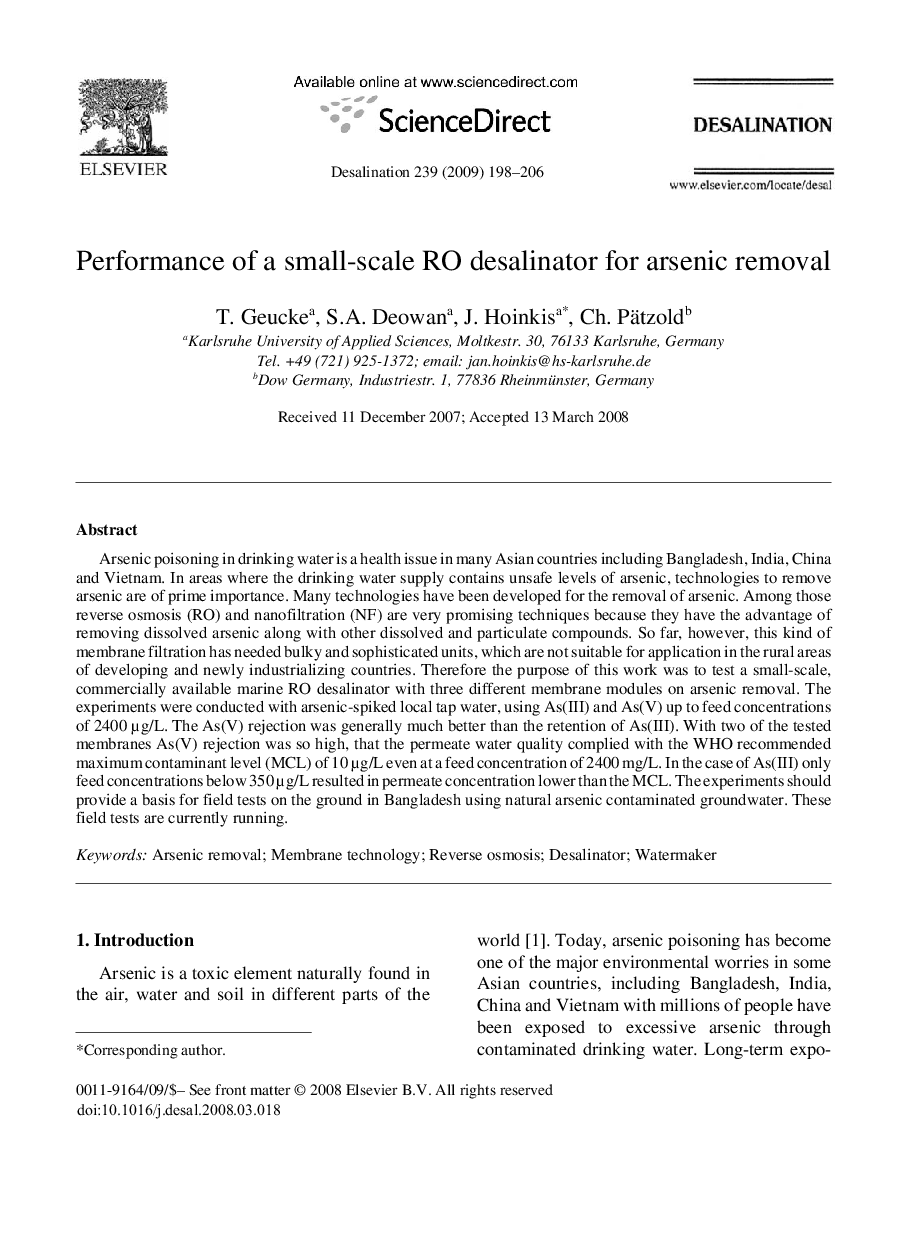| Article ID | Journal | Published Year | Pages | File Type |
|---|---|---|---|---|
| 626958 | Desalination | 2009 | 9 Pages |
Arsenic poisoning in drinking water is a health issue in many Asian countries including Bangladesh, India, China and Vietnam. In areas where the drinking water supply contains unsafe levels of arsenic, technologies to remove arsenic are of prime importance. Many technologies have been developed for the removal of arsenic. Among those reverse osmosis (RO) and nanofiltration (NF) are very promising techniques because they have the advantage of removing dissolved arsenic along with other dissolved and particulate compounds. So far, however, this kind of membrane filtration has needed bulky and sophisticated units, which are not suitable for application in the rural areas of developing and newly industrializing countries. Therefore the purpose of this work was to test a small-scale, commercially available marine RO desalinator with three different membrane modules on arsenic removal. The experiments were conducted with arsenic-spiked local tap water, using As(III) and As(V) up to feed concentrations of 2400 μg/L. The As(V) rejection was generally much better than the retention of As(III). With two of the tested membranes As(V) rejection was so high, that the permeate water quality complied with the WHO recommended maximum contaminant level (MCL) of 10 μg/L even at a feed concentration of 2400 mg/L. In the case of As(III) only feed concentrations below 350 μg/L resulted in permeate concentration lower than the MCL. The experiments should provide a basis for field tests on the ground in Bangladesh using natural arsenic contaminated groundwater. These field tests are currently running.
